Looking for some of the best trees to grow indoors? While houseplants are a great addition to help liven up your home, growing a few small trees can add a whole new dimension to the look and feel of your indoors.
Growing trees indoors is a great way to add a statement to any room within your home. Just like you would display art pieces on your walls or place a specific piece of furniture, trees can add texture, color, and interest to almost anywhere.
Not only can they change the feel of any room or decor, but they can also help improve indoor air quality. It is also said that growing houseplants and trees indoors can help to reduce stress and anxiety and to help improve overall mental health.
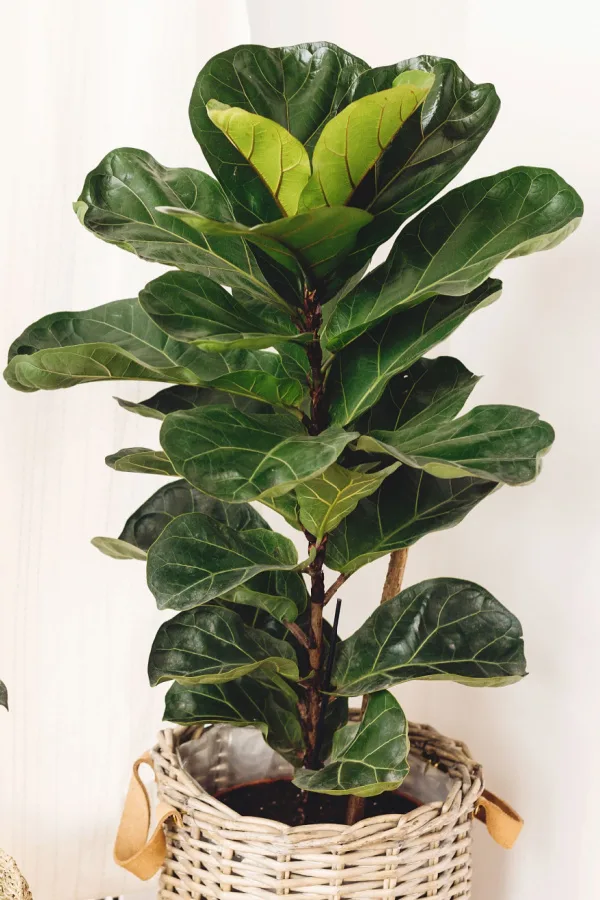
There are many different things to consider when picking the right indoor tree variety for your home. Where you are wanting to place the tree, the amount of space that you have available, the amount of sunlight the space receives, the mature size of the tree variety you are choosing, and whether you have pets or little kids at home all come into play.
Thankfully, there is a wide variety of trees that will work for all sorts of situations. Check out these 8 great varieties to grow (product links are provided with each) and add to your home. They make great additions to easy-growing houseplants like spider plants or peace lilies.
Best Tree Varieties To Grow Indoors
1. Fiddle Leaf Fig (Ficus lyrata)
Recently, fiddle leaf fig trees have really grown in popularity. With their large, textured leaves and dense growth, they are great for modernizing home spaces. They are quick growers when in the right growing conditions.
Fiddle leaf figs require bright, indirect light from a south or east-facing window for best growth. They do not do well in low-light situations. Their large, broad leaves will need to be dusted regularly to help them absorb sunlight.
Mature Height Indoors: 6 to 10 feet
Light Requirements: Bright, indirect light
Watering: Every 1 to 2 weeks
Repotting: Every spring until mature
Toxicity: Toxic
2. Rubber Plant (Ficus elastica)
An advantage of the rubber plant is that it is available in many different colors and styles. They feature large, waxy leaves in colors of solid dark green/almost black to tricolor to variegated – A look for any home aesthetic.
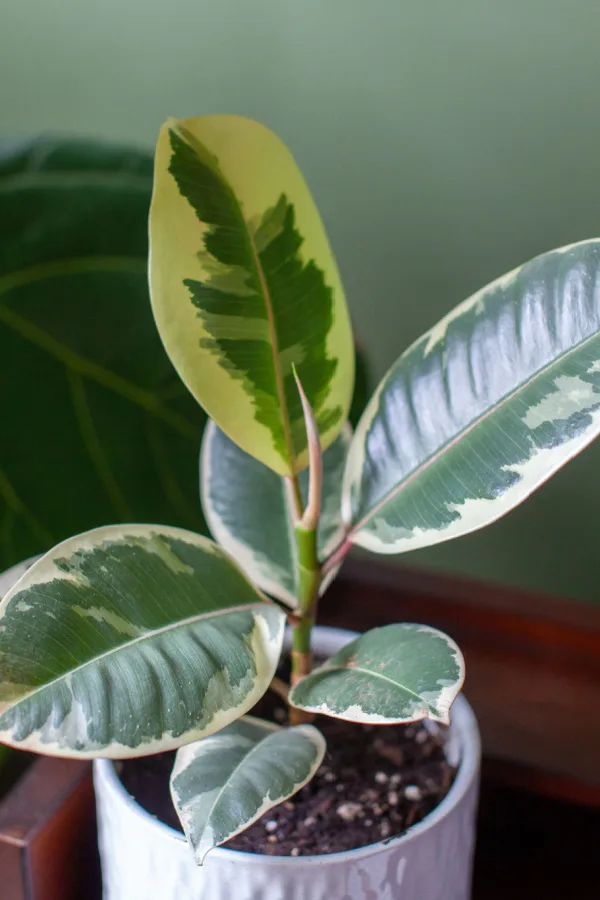
While some sources say differently, rubber plants to best with bright, indirect light. Without the correct type of lighting, younger plants will be slow to grow. Mature, fully-grown rubber plants will be able to handle lower light situations a bit better than younger trees, however.
Mature Height: 2 to 10 feet
Light Requirements: Bright, indirect light
Watering: Every 1 to 2 weeks
Repotting: Every year until reaches desired size
Toxicity: Toxic
3. Weeping Fig (Ficus Benjamina)
The weeping fig is a great indoor tree that prefers bright, filtered light in order to thrive. Once you find a good spot for the weeping fig, leave it there since it isn’t a fan of being repositioned or with temperature fluctuations. However, with ideal conditions, weeping figs can live between 20 to 50 years, so choose your location wisely.
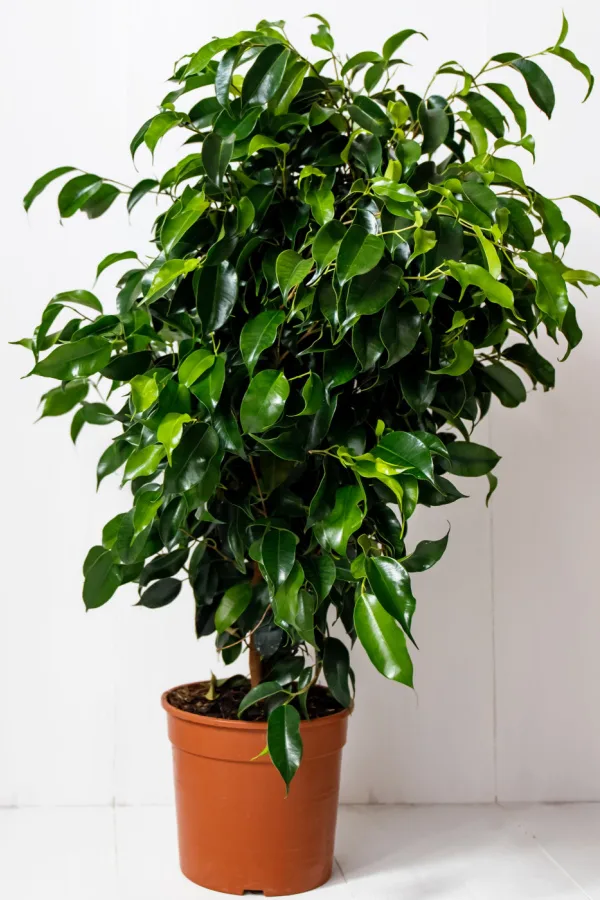
This fast grower features glossy dark green foliage that extends from a central trunk. The trunk can often be found braided for a fun visual look. Weeping figs don’t grow as large as some indoor trees, making them a great choice for smaller apartments. You can prune the plant to help keep it tidier, too.
Mature Height: 3 to 6 feet
Light Requirements: Bright, indirect
Watering: Weekly
Repotting: Every year until mature
Toxicity: Toxic
4. Dwarf Umbrella Tree (Schefflera arboricola)
There are two main types of Umbrella Trees: The dwarf umbrella tree (Schefflera arboricola) and the Schefflera actinophylla, which can reach up to 15 feet tall if grown indoors. In order to have a full, sturdy tree, the dwarf umbrella tree requires bright, indirect sunlight. They can become rather leggy and thin without proper lighting since leaf dropping often occurs without the right conditions.
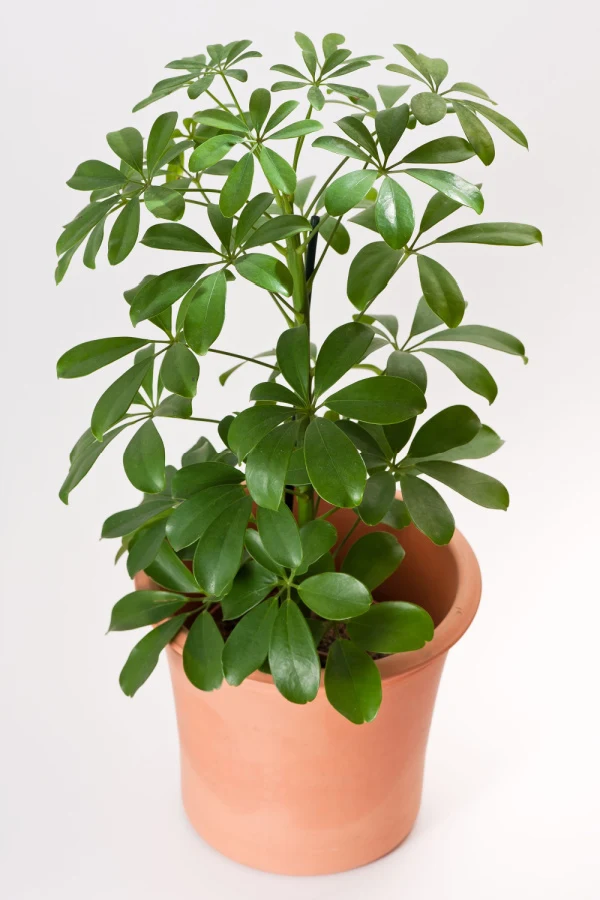
Mature dwarf umbrella trees feature multiple leaflets per stem. Each leaflet contains several oval leaves that come from a central stem. The leaves can be variegated in color or solid green.
Mature Height: 3 to 6 feet
Light Requirements: Bright, indirect
Watering: Weekly
Repotting: As needed
Toxicity: Toxic
5. Dragon Tree (Dracaena marginata)
Dragon trees are perfect for newer plant parents since they are a bit hardier and not as easy to kill as other indoor tree varieties. They thrive in bright, indirect lighting situations but can also be in lower-light areas in exchange for slower growth. It can take a dragon tree up to 10 years before it grows to its mature height indoors.
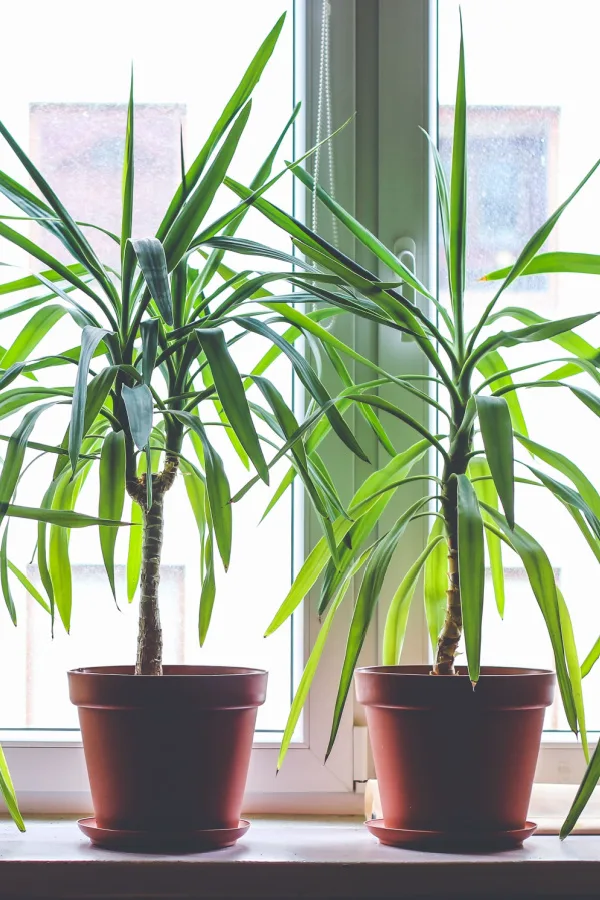
These indoor trees feature long, blade-like leaves that have green hues. The leaves can have red-tinted outer edges, depending on the variety. The bark of the trunk is typically brownish-gray.
Mature Height Indoors: Up to 8 feet
Light Requirements: Bright direct to low light
Watering: Every 1 to 2 weeks; Drought tolerant
Repotting: Every 2 to 3 years until mature
Toxicity: Toxic
6. Parlor Palm (Chamaedorea elegans)
If you are looking for an excellent low-light tree to brighten up a dark corner, then parlor palms are the tree for you. North-facing windows are perfect for providing just enough indirect light to keep parlor palms happy.
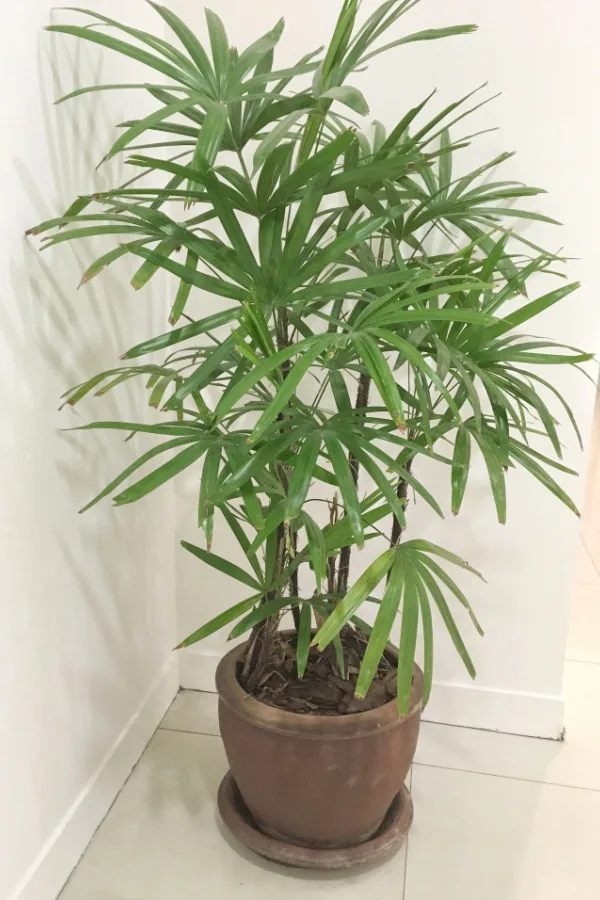
Not only are they good in darker lighting situations, but they are also pet friendly, so there is no need for worrying about little fido taking a bite or two. They are also forgiving for people who might miss a watering or two.
Mature Height Indoors: Between 2 to 10 feet
Light Requirements: Low, filtered light to bright indirect
Watering: Every 1 to 2 weeks
Repotting: Every other year until mature
Toxicity: Pet-friendly
7. Lady Palm (Rhapis excelsa)
The lady palm is a slow-growing indoor tree that does well in low-light situations as long as it gets plenty of warm, humid air. Lady palms prefer to stay in somewhat moist (not saturated) fertile soil, so be sure to water as soon as the top inch of the soil is dry. This is especially important in the spring and summer growing seasons.
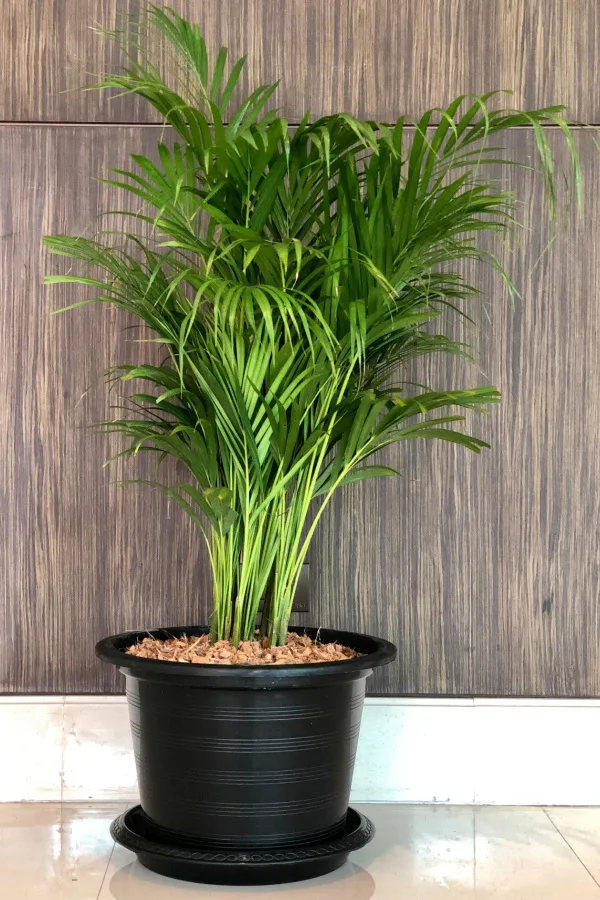
The lady palm features several central stems that send out fan-shaped fonds in shades of green. Each fond will contain multiple thin leaves. To help avoid the yellowing of leaves, use a cool-mist humidifier to help keep indoor humidity levels above 50% for lady palms.
Mature Height Indoors: Up to 6 feet
Light Requirements: low light to bright indirect
Watering: Every 1 to 2 weeks
Repotting: Every other year until mature
Toxicity: Pet-friendy
8. Money Tree (Pachira Aquatica)
The money tree is traditionally a sign of good luck and prosperity. It is also a popular indoor tree to grow for those who practice feng shui since money trees are known to help increase the positive energy within their home or office space.
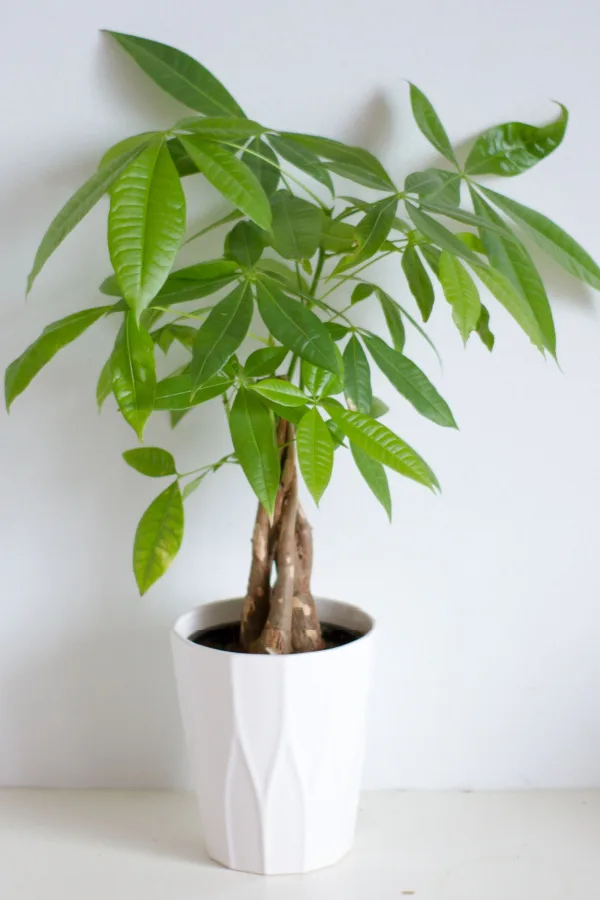
You often will find smaller money trees for sale in garden centers with braided trunks. The braids will continue to grow as the tree matures. Avoid placing money trees in low-light situations but they can handle medium, indirect light. Thankfully, they will also thrive under artificial lighting, so they are perfect plants for offices or businesses.
Mature Height Indoors: Up to 6 feet but can be kept small
Light Requirements: Medium to bright indirect sunlight
Watering: Every 1 to 2 weeks
Repotting: Only until reached desired size
Toxicity: Pet-friendly
Not only can adding a few trees make your indoors feel live outside living, it can also help to make winter life more bearable. In fact, who knows, maybe you won’t notice the snow piling up outside as long as there is greenery around!
Follow Our Facebook Page For Even More Great Tips! Simple Garden Life Facebook Page
Simple Garden Life is a website dedicated to keeping gardening fun, simple and enjoyable! We publish two new articles each week along with a new garden podcast episode every two weeks. This article may contain affiliate links.
